
A delicious battle of regional styles results in one full stomach.
When it comes to okonomiyaki (sometimes described as “savory pancakes”), you’ll most likely find it in one of two styles: Osaka or Hiroshima. While most of the ingredients are the same, in the Osaka style they’re all mixed together before cooking, while in Hiroshima the ingredients are cooked separately in layers then stacked on top of each other. Hiroshima-style okonomiyaki also almost always contains an added layer of yakisoba noodles, whereas Osaka-style does not.
It might seem like a small difference, but asking whether someone likes Osaka-style or Hiroshima-style okonomiyaki can be like asking if someone likes Pepsi or Coca-Cola. Most people are OK with either one, but some diehard fans only have love for one and not the other.
Enter our Japanese-language reporter Tasuku Egawa, who isn’t an okonomiyaki hardliner either way, and, quite unusually for someone living in Japan, hadn’t eaten okonomiyaki since he was in junior high (and it was a frozen one, to boot). But since he had a trip to Hiroshima coming up, Tasuku found himself thinking about the two types of okonomiyaki. After doing some checking around, he found that the oldest currently operating Osaka-style okonomiyaki restaurant is actually located in Tokyo’s Asakusa neighborhood. He also learned that a chain called Micchan, which started in Hiroshima in 1950, claims to be the originator of Hiroshima-style okonomiyaki.
As you can probably guess from the title, Tasuku decided to try out these two restaurants and see how they compare, starting with Micchan’s flagship restaurant in Hiroshima City.
▼ First sign that it’s good: there was a line, even before the place opened for the day.
▼ The inside was just as buzzing.
When he finally got inside, it was absolutely packed, looking even more so due to the plastic screens placed between seats to prevent the spread of the coronavirus. While most Osaka-style restaurants let you cook your own okonomiyaki on a grill built into the table, in Hiroshima it’s always prepared by the chef. Tasuku even asked the family at the table next to him for recommendations, finding out they were born and bred in Hiroshima.
▼ Who better to ask for recommendations than a regular?
Along with the restaurant’s specialty okonomiyaki (1,400 yen [US$11]), they recommended he get a side dish called koune that “everyone in Hiroshima eats” to hold him over until the okonomiyaki came out.
▼ Apparently it involves meat.
Koune turned out to be beef shoulder mixed with veggies. Think of it as Hiroshima’s soul food. It was fatty, lightly seasoned, and chewy, making it the perfect pair to the beer he ordered.
▼ And here it is–the main course okonomiyaki.
After 15 minutes of munching, his okonomiyaki finally came, with layers of cabbage, bean sprouts, and pork, a generous helping of yakisoba noodles, and a thin covering of fried egg atop everything.
At the bottom was a thin crepe. Tasuku was surprised by the lack of batter, but he figured it was so they could make more room for the yakisoba noodles. The thin layers were just enough to keep moisture inside so that the noodles in the center were nice and chewy, while the outer layer got satisfyingly crispy.
The sauce can make or break a good okonomiyaki. Micchan uses a sweet okonomiyaki sauce to pair with the savoriness of the fillings. Tasuku also noticed a pitcher of extra sauce on the table, as apparently a lot Hiroshima residents like to heap it on generously.
▼ The sauce can be used for other menu items, too!
He also ordered a side dish of eggs, meat, and yakisoba noodles mixed together. It was pretty much the same as the okonomiyaki minus the batter. Delicious.
▼ Here’s another closeup of the okonomiyaki.
Overall, Tasuku thought this restaurant’s defining features were its careful selection of ingredients and the contrast between the crispness of the crepe and the fluffy okonomiyaki interior. It definitely stood out from the okonomiyaki he remembered eating as a kid, so he enjoyed the new experience.
▼ Then he teleported back to Tokyo.
Next up was Japan’s longest-running okonomiyaki restaurant, Sometaro, in Asakusa, which was opened in 1937 or 1938 (when you’ve been in business this long, apparently it’s hard to keep track). This is the kind of joint where the staff give you the ingredients you order and you make the okonomiyaki yourself. The owners don’t allow photographs of the interior, but Tasuku could take some pictures of his food.
▼ The ingredients, the bowl, and the general vibe gave him an at-home feeling.
Similarly to when he ate in Hiroshima, he got Sometaro’s basic house specialty, which is just pork, egg, and cabbage (there were also other menu options like beef and shrimp). He got his ingredients in a bowl with a spoon, almost like he was about to eat cereal.
▼ If you’re not experienced at making okonomiyaki, notes will help. Basically, it’s stir well, put oil on the teppan grill, then add your okonomiyaki batter and cook each side for 5 minutes.
▼ Let’s get cooking, Tasuku!
Okonomiyaki can get pretty sticky and cakey on the grill, so Tasuku spread a generous amount of oil. Better safe than sorry! In this case, sorry would mean a slightly more empty stomach.
▼ Then he arranged his batter in a pancake shape.
▼ After five minutes, he flipped it over. If it looks toasty brown like this, that’s a good sign.
While it’s convenient to visit Hiroshima-style places like Micchan that make everything for you, there are also a lot of people that enjoy being able to make it themselves. You can add the typical toppings like sauce, seaweed flakes, mayonnaise, and bonito flakes to your liking.
▼ A prime example of slathering on all the sauce you want.
Time for the taste test! Tasuku took a bite and noticed the distinct crunch of the cabbage right away. Where Micchan’s okonomiyaki’s insides were soft and fluffy, Sometaro’s were crunchy. The sauce Sometaro uses was also more on the salty side than the sweet side, so that worked with the crispy texture made for a hearty meal.
▼ He got more of a mouthfeel of the meat in this one, too.
So who won: the originators of okonomiyaki, or the longest-running shop? In Tasuku’s opinion, they both win. Each excelled at something different–one being sweet and one being salty–and the amount of batter used was different. All of these elements made for two almost completely different dishes.
The vibes in the places were for two different crowds, too, it seems. If you want to have a fun and relaxed group dinner, a place like Micchan is the place to go. But if you just want a quick and satisfying meal, Sometaro will provide that.
The bottom line: try different okonomiyaki places for yourself, or even try making it yourself in different styles! Every restaurant’s dish is slightly different. Hopefully this inspires you to become an okonomiyaki connoisseur like Tasuku might someday become.
Images ©SoraNews24
● Want to hear about SoraNews24’s latest articles as soon as they’re published? Follow us on Facebook and Twitter!
[ Read in Japanese ]

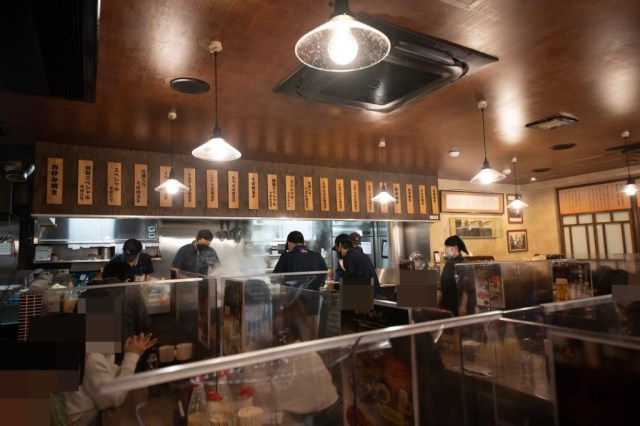



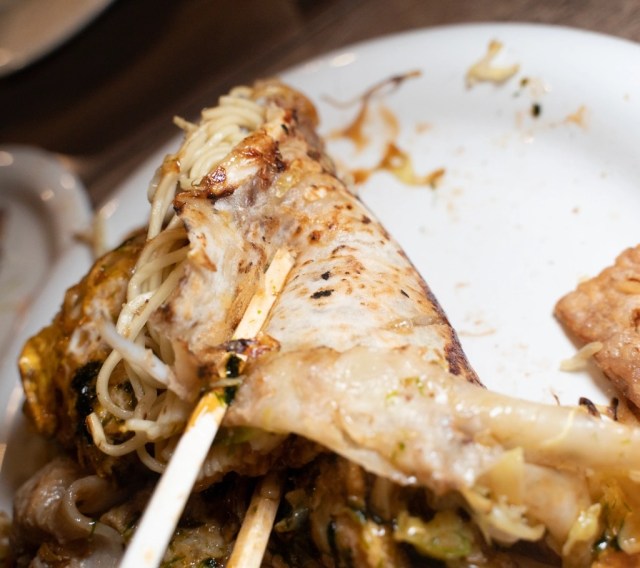



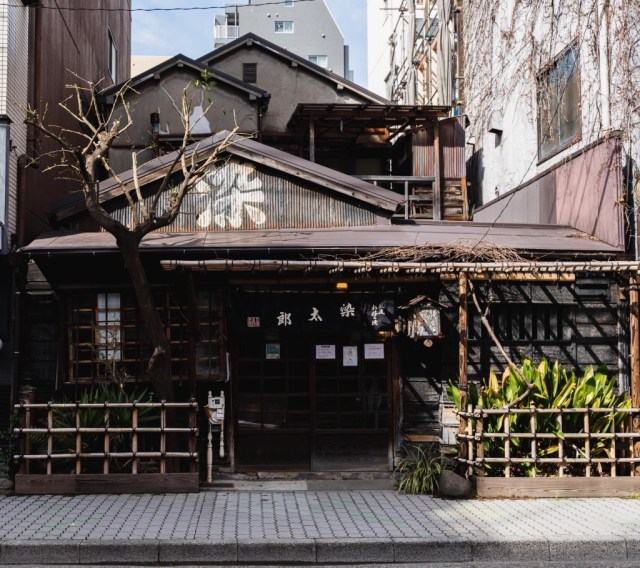


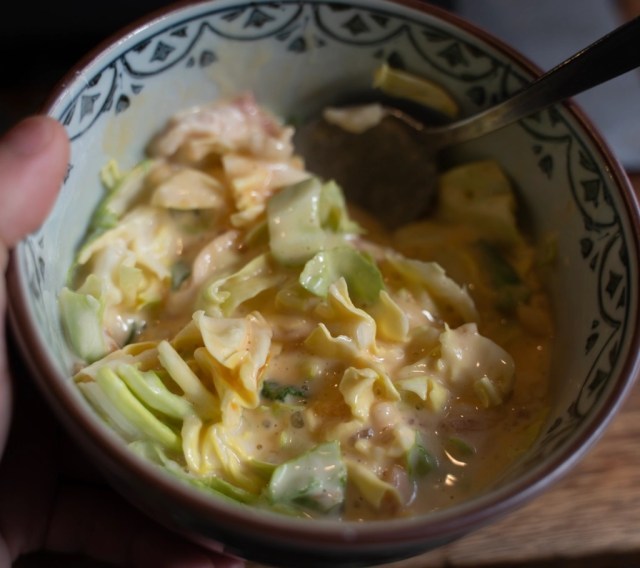



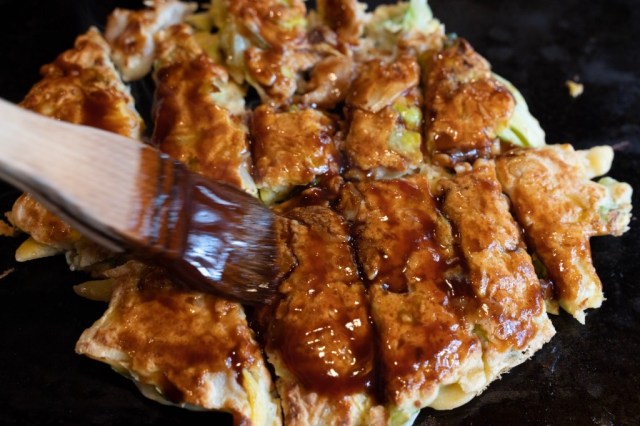

 Why you shouldn’t call this food “Hiroshimayaki” if you’re talking to people from Hiroshima
Why you shouldn’t call this food “Hiroshimayaki” if you’re talking to people from Hiroshima Okonomiyaki you can eat with one hand? We try a revolutionary new frozen food【Taste test】
Okonomiyaki you can eat with one hand? We try a revolutionary new frozen food【Taste test】 Japanese politician apologizes to prime minister for calling wife’s cooking “Hiroshima-yaki”
Japanese politician apologizes to prime minister for calling wife’s cooking “Hiroshima-yaki” Hey, Japanese taxi driver! Take us to a good non-Hiroshima-y restaurant in Hiroshima
Hey, Japanese taxi driver! Take us to a good non-Hiroshima-y restaurant in Hiroshima Microwavable okonomiyaki that you can eat with one hand? Yes, please!
Microwavable okonomiyaki that you can eat with one hand? Yes, please! Japanese beef bowl chain Sukiya’s 2026 Smile Box lucky bag basically pays for itself
Japanese beef bowl chain Sukiya’s 2026 Smile Box lucky bag basically pays for itself Cup Noodle tries an authentic Jiro-style ramen, but something’s not quite right
Cup Noodle tries an authentic Jiro-style ramen, but something’s not quite right What did Shibuya really look like after the crowds on New Year’s Day?
What did Shibuya really look like after the crowds on New Year’s Day? Combining all of Nissin’s new Cup Noodle series into one powerful bowl of ramen
Combining all of Nissin’s new Cup Noodle series into one powerful bowl of ramen Is this the most relaxing Starbucks in Japan?
Is this the most relaxing Starbucks in Japan? That time Seiji called JASRAC to ask why he didn’t get paid royalties for his song being on TV
That time Seiji called JASRAC to ask why he didn’t get paid royalties for his song being on TV Pizza Hut Japan’s hot lucky bags are perfect for a New Year’s pizza party
Pizza Hut Japan’s hot lucky bags are perfect for a New Year’s pizza party Japan’s train travel soundscape faces sad change as JR East axes special station departure melodies
Japan’s train travel soundscape faces sad change as JR East axes special station departure melodies Is McDonald’s Japan’s new watermelon frappe worth your yen?
Is McDonald’s Japan’s new watermelon frappe worth your yen? Can you crack this beautifully minimalist comparison of Japan’s big cities and rural countryside?
Can you crack this beautifully minimalist comparison of Japan’s big cities and rural countryside? Starbucks Japan ready to get Year of the Horse started with adorable drinkware and plushies【Pics】
Starbucks Japan ready to get Year of the Horse started with adorable drinkware and plushies【Pics】 7 great places to see Mt. Fuji from without having to climb it
7 great places to see Mt. Fuji from without having to climb it Cyberpunk anime meets traditional culture in Ghost in the Shell gold leaf Japanese changing screens
Cyberpunk anime meets traditional culture in Ghost in the Shell gold leaf Japanese changing screens Hayao Miyazaki says Happy New Year to Studio Ghibli fans with new art for Year of the Horse
Hayao Miyazaki says Happy New Year to Studio Ghibli fans with new art for Year of the Horse Hello Kitty Choco Egg figures are an adorable trip through three periods of Japanese pop culture【Pics】
Hello Kitty Choco Egg figures are an adorable trip through three periods of Japanese pop culture【Pics】 We found possibly the quietest Japanese-style hotel in Tokyo’s bustling Shinjuku district
We found possibly the quietest Japanese-style hotel in Tokyo’s bustling Shinjuku district 7-Eleven Japan’s ramen-cooking robot whipped us up a bowl of noodles【Taste test】
7-Eleven Japan’s ramen-cooking robot whipped us up a bowl of noodles【Taste test】 Sumo Sanrio! Hello Kitty and pals team up with Japan Sumo Association for new merch【Pics】
Sumo Sanrio! Hello Kitty and pals team up with Japan Sumo Association for new merch【Pics】 Japan’s oldest largetooth sawfish in captivity back on display in Mie Prefecture
Japan’s oldest largetooth sawfish in captivity back on display in Mie Prefecture More Than a Capsule Stay: Why Solo Travelers Choose “global cabin Yokohama Chinatown”
More Than a Capsule Stay: Why Solo Travelers Choose “global cabin Yokohama Chinatown” 7-Eleven Japan starts new temporary luggage storage service in over 300 branches
7-Eleven Japan starts new temporary luggage storage service in over 300 branches Disillusionment at Tsukiji’s tourist-target prices led us to a great ramen restaurant in Tokyo
Disillusionment at Tsukiji’s tourist-target prices led us to a great ramen restaurant in Tokyo Starbucks teams up with 166-year-old Kyoto doll maker for Year of the Horse decorations【Photos】
Starbucks teams up with 166-year-old Kyoto doll maker for Year of the Horse decorations【Photos】 Tokyo considering law requiring more trash cans following litter increase in heavily touristed area
Tokyo considering law requiring more trash cans following litter increase in heavily touristed area Tokyo’s Tsukiji sushi neighborhood asks tour groups to stay away for the rest of the month
Tokyo’s Tsukiji sushi neighborhood asks tour groups to stay away for the rest of the month Tokyo event lets you travel back in time, for free, to celebrate 100 years since Showa era start
Tokyo event lets you travel back in time, for free, to celebrate 100 years since Showa era start Sanrio theme park in Japan announces plans to expand into a Sanrio resort
Sanrio theme park in Japan announces plans to expand into a Sanrio resort Japan may add Japanese language proficiency, lifestyle classes to permanent foreign resident requirements
Japan may add Japanese language proficiency, lifestyle classes to permanent foreign resident requirements Stamina-destroying “Paralysis Noodles” are Tokyo’s newest over-the-top ramen innovation
Stamina-destroying “Paralysis Noodles” are Tokyo’s newest over-the-top ramen innovation Survey asks foreign tourists what bothered them in Japan, more than half gave same answer
Survey asks foreign tourists what bothered them in Japan, more than half gave same answer Japan’s human washing machines will go on sale to general public, demos to be held in Tokyo
Japan’s human washing machines will go on sale to general public, demos to be held in Tokyo Japan’s deadliest food claims more victims, but why do people keep eating it for New Year’s?
Japan’s deadliest food claims more victims, but why do people keep eating it for New Year’s? We deeply regret going into this tunnel on our walk in the mountains of Japan
We deeply regret going into this tunnel on our walk in the mountains of Japan Studio Ghibli releases Kodama forest spirits from Princess Mononoke to light up your home
Studio Ghibli releases Kodama forest spirits from Princess Mononoke to light up your home Major Japanese hotel chain says reservations via overseas booking sites may not be valid
Major Japanese hotel chain says reservations via overseas booking sites may not be valid Put sesame oil in your coffee? Japanese maker says it’s the best way to start your day【Taste test】
Put sesame oil in your coffee? Japanese maker says it’s the best way to start your day【Taste test】 No more using real katana for tourism activities, Japan’s National Police Agency says
No more using real katana for tourism activities, Japan’s National Police Agency says Starbucks Japan reveals new sakura drinkware collection, inspired by evening cherry blossoms
Starbucks Japan reveals new sakura drinkware collection, inspired by evening cherry blossoms Updated cherry blossom forecast shows extra-long sakura season for Japan this year
Updated cherry blossom forecast shows extra-long sakura season for Japan this year Okonomiyaki Wine: Japan’s savory pancakes just got a new sidekick
Okonomiyaki Wine: Japan’s savory pancakes just got a new sidekick Osaka’s Okonomiyaki Burrito is both classic Taco Bell and completely different【Taste test】
Osaka’s Okonomiyaki Burrito is both classic Taco Bell and completely different【Taste test】 Best all-you-can-eat okonomiyaki in Japan? Restaurant chain serves up a feast for under $14
Best all-you-can-eat okonomiyaki in Japan? Restaurant chain serves up a feast for under $14 Kyoto restaurant chain specialises in…tomato okonomiyaki?
Kyoto restaurant chain specialises in…tomato okonomiyaki? Shakey’s creates Japanese-style-pizza pizza with new Okonomiyaki Pizza
Shakey’s creates Japanese-style-pizza pizza with new Okonomiyaki Pizza Move over ramen and udon, “cup okonomiyaki” has come to play*
Move over ramen and udon, “cup okonomiyaki” has come to play* Okonomiyaki taiyaki: Sweet and savoury combination confuses the senses
Okonomiyaki taiyaki: Sweet and savoury combination confuses the senses The best Osaka souvenir is Okonomiyaki Senbei, and here’s why
The best Osaka souvenir is Okonomiyaki Senbei, and here’s why McDonald’s Japan adds the flavour of okonomiyaki to its menu for a limited time
McDonald’s Japan adds the flavour of okonomiyaki to its menu for a limited time A visit to the birthplace of Kobe’s other famous food, sobameshi, to try it bokkake-style
A visit to the birthplace of Kobe’s other famous food, sobameshi, to try it bokkake-style We travel across the city like royalty — Hiroshima streetcar turns into fancy, private dining area
We travel across the city like royalty — Hiroshima streetcar turns into fancy, private dining area Hokkaido, Osaka, and Fukuoka: Taste-testing McDonald’s oddly named Adult Regional Teriyaki burgers
Hokkaido, Osaka, and Fukuoka: Taste-testing McDonald’s oddly named Adult Regional Teriyaki burgers “Flat Takoyaki” at Nanpuu reimagines Japanese street food
“Flat Takoyaki” at Nanpuu reimagines Japanese street food Be Mr. Sato’s online friend, and he might take you to dinner, like he did with these foreign fans
Be Mr. Sato’s online friend, and he might take you to dinner, like he did with these foreign fans We try making Nisshin’s Jijimi Korean Pancakes in a cup kit【SoraKitchen】
We try making Nisshin’s Jijimi Korean Pancakes in a cup kit【SoraKitchen】 We visit the Japanese branch of a Singaporean restaurant serving Singapore-style tempura
We visit the Japanese branch of a Singaporean restaurant serving Singapore-style tempura
Leave a Reply